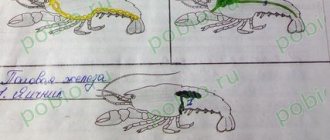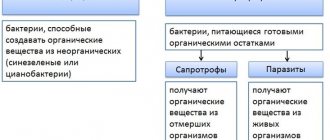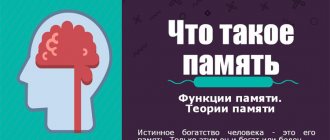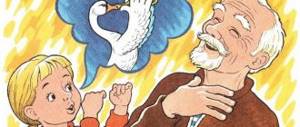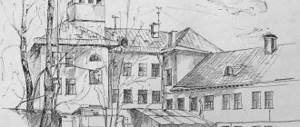Biopolymers are necessary components of all living organisms; they are of great importance for the life of the cell. Polysaccharides act as the main source of energy, lipids protect organs from mechanical stress, and nucleic acids store hereditary information. The functions of proteins are no less important. In 10th grade biology, children consider this topic in detail.
Structure and structure
Proteins (proteins, polypeptides) are polymeric organic compounds consisting of a chain of alpha amino acids formed by a peptide bond . Their structure is divided into four levels:
- Primary refers to the nucleotide sequence determined by the genetic code of the protein.
- The secondary structure, like structures of higher orders, is formed during the folding of the polypeptide chain into helices, folded zigzag layers or disordered fragments stabilized by hydrogen bonds.
- The tertiary structure is determined by the primary structure and is composed of secondary elements stabilized to a large extent by hydrophobic interactions, as well as covalent, ionic and hydrogen bonds.
- Quaternary is the formation of a macromolecular formation from individual polypeptide chains.
The level of structural organization may vary. Depending on external conditions, the protein adopts a preferred or energetically more favorable conformation.
Proteins are also classified according to their structure type. Based on this feature, they can be divided into three groups:
- Fibrillar have an elongated thread-like structure. Most often they do not dissolve in water and have a large mass. Examples of such polypeptides are hair keratin, tendon and cartilage collagen, vascular and lung elastin.
- Globular are water-soluble molecules tightly rolled into a spherical shape. These include enzymes, antibodies, and some hormones, such as insulin.
- Membranes are embedded in a molecular structure that separates the contents of the cell and its organelles from the external environment. They can interact with one surface of the membrane or penetrate through it one or more times. This is the structure of the protein that makes up the visual pigment.
Functions of proteins. lesson plan in biology (grade 9) on the topic
Lesson topic: Functions of proteins
Date 09/22/14
Goals:
- organize the cognitive activity of students at the level of perception and primary comprehension of material about the functions of proteins; promote students’ knowledge of the composition and structure of proteins;
- promote the development of skills to observe, analyze, draw conclusions; continue the formation of practical skills in the process of research and skills of independent work with the text of the textbook;
- to foster a healthy lifestyle and culture of communication among students.
Type of training session: lesson on learning new material.
Teaching aids: table “Protein Structures”, computer.
Methods: visual, practical, problem presentation, partially search, search and research.
Equipment: Egg white albumin solution (dilute the white of one chicken egg in 0.5 liters of water), concentrated nitric acid, milk, acetic acid, test tubes, stand, beakers, glass rods, alcohol lamp, holder.
During the classes:
I. Organizational stage
Greeting, checking students' readiness for a lesson, organizing students' attention.
Guys! Look at me, take a deep breath, now exhale. And we begin to work.
II. The stage of preparing students to learn new material
1. First, let's do a theoretical warm-up.
Conversation on questions:
- What are biopolymers? Give examples of biopolymers.
- What substances are called proteins or proteins?
- What is the primary structure of a protein? What connections are there? (display on the table “Protein Structures” at the board)
- What is the secondary structure of a protein? What connections are there?
- What is the tertiary structure of a protein? What connections are there?
- What is the quaternary structure of a protein?
- What is protein denaturation?
2. Experiment.
Now I will ask you to observe the experiment I am conducting and comment on it:
Demo Experience 1:
10-15 ml of albumin protein solution is poured into a test tube and heated in a burner flame.
What are we observing? Comment on the observed phenomenon.
(A protein precipitate appears before the liquid boils. The protein coagulates, the denaturation process is irreversible).
Demo Experience 2:
10-15 ml of protein is poured into a test tube and 10 ml of concentrated nitric acid is added.
What are we observing? Comment on the observed phenomenon.
(A white amorphous precipitate of protein is formed. Concentrated acids also cause irreversible denaturation.)
What conclusion can we draw from this study?
(The action of high temperatures and concentrated acids causes denaturation of proteins)
Guys! Why does acid burn on skin? (irreversible denaturation of proteins occurs)
Why does an increase in body temperature to 42 degrees in humans lead to death? (irreversible denaturation of proteins occurs)
Now you can conduct the experiment yourself.
There is milk in front of you. Attention, question.
— Why do you think children are given milk in schools in our region?
(milk, the most valuable food product, contains three substances at once: fat, carbohydrate - lactose and, of course, protein - casein, which is so necessary for a growing body).
Now you will discover it yourself. Add a few drops of acetic acid to the glasses of milk.
-What are you observing? Comment on the observed phenomenon (casein coagulates and a curdled sediment (curd) is formed).
—Can I make porridge from this milk (milk is demonstrated)? (Yes)
- And from this? (demonstrates milk in which casein has curdled) (no)
— Can denatured proteins perform their functions? (If the natural structure is disrupted, proteins cannot perform their functions).
- So what is the topic of today's lesson? (functions of proteins).
Please write down the topic of the lesson in your notebook (topic on slide 1).
Now let's try to formulate goals. The teacher summarizes what has been said.
III. Stage of learning new material
1. Presentation of protein functions
Analysis of photos and drawings on slides.
Slide 2
Analyze the images on the slide. Why do proteins perform a construction function? Proteins are part of all cell membranes and cell organelles. The walls of blood vessels, cartilage, tendons, hair and nails consist predominantly of protein.
Slide 3
Analyze the images on the slide. Why do proteins perform a catalytic or enzymatic function? Special proteins - enzymes are capable of accelerating biochemical reactions in cells tens and hundreds of millions of times. About a thousand enzymes are known. Each reaction is catalyzed by its own specific enzyme.
Slide 4
Analyze the images on the slide. Why do proteins perform motor function? The motor function is performed by special contractile proteins. Thanks to them, cilia and flagella move in protozoa, chromosomes move during cell division, muscles contract in multicellular organisms, and other types of movement in living organisms are improved.
Slide 5
Analyze the images on the slide. Why do proteins perform a transport function? Blood cells - red blood cells contain the protein hemoglobin, which carries oxygen from the lungs to the cells of other tissues and organs.
In muscles, this function is performed by the protein myoglobin. Serum proteins promote the transfer of lipids and fatty acids and various biologically active substances. Transport proteins in the outer membrane of cells carry various substances from the environment into the cytoplasm.
Slide 6
Analyze the images on the slide. Why do proteins perform a protective function?
Blood cells - leukocytes mature in the thymus (thymus gland) and lymph nodes, turning into lymphocytes. The latter divide, forming antibodies that block foreign proteins. Thus, specific proteins protect the body from the invasion of foreign proteins and microorganisms;
fibrin and thrombin protect the body from blood loss.
Slide 7
Analyze the images on the slide. Why do proteins perform a regulatory function? The slide shows the human endocrine system. Endocrine glands secrete hormones into the blood that are protein in nature. They maintain constant concentrations of substances in the blood and cells, participate in growth, reproduction and other vital processes. For example, insulin regulates blood sugar.
Slide 8
Analyze the images on the slide. Why do proteins perform a signaling function? The cell membrane contains proteins that can change their tertiary structure in response to environmental factors. This is how signals are received from the external environment and information is transmitted into the cell.
Slide 9
Analyze the images on the slide. Why do proteins perform an energy function? Proteins can perform an energy function, being one of the energy sources in the cell. When 1 g of protein is completely broken down into final products, 17.6 kJ of energy is released.
2. Independent work (slide 10) with the textbook text on pp. 27-28.
Read the text and fill out the table “Functions of Proteins” in a printed workbook – pp. 12-13
IV. Stage of checking initial knowledge acquisition (slide 11)
Answer the questions:
1. What functions of proteins do you know?
2. The oxidation of 1 g of proteins releases the same amount of energy as the oxidation of 1 g of carbohydrates. Why does the body use proteins as a source of energy only in extreme cases?
3. Why is collagen protein, which is part of the fibrous structure found in skin tissue, added to cosmetic skin care creams?
4. Why are transplanted organs: kidneys, liver often rejected from patients?
5. Wool contains the protein keratin, why does wool shrink when washed in water with t° = 90° -100?
V. Stage of information about homework (slide 12)
Homework: §1.5, questions 1 - 5, p. 29.
If desired, prepare messages: “Antibodies are our protectors,” “Proteins are enzymes,” “Proteins are hormones.”
VI. Stage of summarizing the lesson
VII. Reflection stage (slide 13)
Evaluate your work in class by completing the following sentences: (on the slide)
Most of all I liked……..
Now I will know………
Today I realized that………..
Municipal educational institution "Rivne secondary school with in-depth study of individual subjects"
Development of a biology lesson in 9th grade
"Protein Functions"
Prepared by: Balamutova Tatyana Ivanovna,
biology teacher
ROVENKI
2011
Characteristic properties
One of the main characteristics of a protein is its size. It is expressed in the number of amino acid residues or kilodaltons. The record holder is a striated muscle protein called connectin. It consists of more than 38 thousand amino acids, and its molecular weight exceeds 3 thousand kilodaltons.
Another important characteristic is the physicochemical properties of polypeptides. The main ones are the following:
- Amphoteric. Proteins contain acidic and basic amino acid residues, therefore, depending on the conditions in chemical reactions, they can either donate or accept an electron pair.
- Solubility. Depending on the structure and external factors, polypeptides are divided into water-soluble (these include blood serum and egg albumin), insoluble (keratin, fibroin) and water-repellent (membrane proteins).
- Denaturation. Chemical, physical or mechanical effects on proteins can cause them to completely or partially lose their secondary, tertiary or quaternary structure.
Squirrels
The human body is made up of one hundred trillion cells, each cell made up of hundreds of millions of protein molecules. Squirrels
─ these are building materials and living nano-machines of our body.
Compared to lipids and carbohydrates, proteins are the most important for the body.
Each of the hundreds of thousands of different proteins has a unique spatial structure. And each protein has its own task and function. There are proteins in bone and muscle tissue, proteins in skin and brain tissue. Proteins enzymes and receptors.
If the body lacks at least one protein (for example, the protein hormone insulin
) human life is in danger, since insulin has a multifaceted effect on metabolism in almost all tissues.
The main effect of insulin is to reduce the concentration of glucose in the blood and
.
Proteins are the most complex molecular systems found in nature.
In addition to carbon, oxygen, hydrogen and nitrogen, proteins may contain sulfur, phosphorus, and iron.
Proteins are built from monomers, which are amino acids
.
Among the two hundred known amino acids, only 20 of them are involved in intracellular protein synthesis. They are called prote and
Genetic or standard amino acids. The question of why exactly these 20 amino acids became “chosen” remains unresolved. It is not entirely clear why these amino acids turned out to be preferable to other similar ones.
From the 20 amino acids that make up proteins, this number
combinations of different proteins that will have exactly the same composition, but different structure.
All amino acids are divided into essential and non-essential.
Nonessential amino acids are synthesized in the human body, these include: alanine, arginine, asparagine, aspartic acid, glycine, glutamate and
n, glutam
and
new acid, prol
and
n, ser
and
n, tyros
and
n and cyste
and
n.
Essential amino acids are not synthesized in the body and must be supplied with food. This is the shaft and
n, histide
n
, isoleucine, leucine
,
lysin
,
methion
n
, threon
n
, trypto
n
, phenylalan
n
. They are found mainly in products of animal origin.
For convenience, the names of amino acids have generally accepted abbreviations.
An amino acid molecule consists of two parts identical to all amino acids, one of which is an amino group (─NH3),
with basic properties, the other with a carboxyl group (─COOH) with acidic properties.
Part of a molecule called a radical (in formulas it is usually denoted by the capital letter er
R), different amino acids have different structures.
Amino acids connect with each other. This creates a molecule that is a peptide. This reaction is called ( polymerization
).
During the polymerization process, a water molecule is released, and the released electrons form a covalent bond, which is called a peptide bond
. It is a bond between carbon and nitrogen atoms.
amino group at one end of the dipeptide
, and on the other there is a free
carboxyl group
, the dipeptide can attach other amino acids to itself.
Proteins can also consist of a large number of amino acid residues. And besides, each amino acid can occur several times in a protein.
A protein may contain one, two or more polypeptide chains. For example, the insulin molecule has two chains, and immunoglobulins consist of four chains .
y.
Proteins include proteins
consisting only of proteins and
proteids
containing a non-protein part. For example, hemoglobin.
Hemoglobin is a complex protein of the chr o
moprote
and
new, that is, the non-protein component here is a special pigment group containing iron -
heme
.
Human hemoglobin is a tetramer, that is, it consists of four subunits. In an adult, they are represented by polypeptide chains α1 (alpha-1),
α2, β1
(beta-1)
and β2.
The quaternary structure of hemoglobin gives it the ability to regulate the addition and removal of oxygen.
Hemoglobin is one of the main proteins that falciparum plasmodia, the causative agent of malaria, feed on. In malaria-endemic areas of the world, hereditary abnormalities in the structure of hemoglobin are very common.
The red blood cell takes on the shape of a
. Because of this, the malarial plasmodium does not penetrate the red blood cell and does not feed on the hemoglobin protein. A change in the shape of the red blood cell leads to the disease sickle cell anemia.
If proteins consist only of amino acids, then they are called simple
.
If proteins contain components of a non-amino acid nature, then such proteins are classified as complex
.
If complex proteins contain carbohydrates
, then they are called
glycoproteins.
If fats are included, then
lipoproteins
, and if nucleic acids are included, then
nucleoproteins
.
It is the structure of protein molecules that determines the variety of functions of proteins and their special role in life processes. Therefore, the study of protein structure is the most important stage in understanding the phenomena occurring in a living cell.
Let's try to detect the protein and reveal its presence.
A protein can be identified by denaturing it.
Denaturation
- This is the loss of a protein molecule of its original structure.
Denaturation can occur under the influence of heat (temperature), chemicals (for example, acids, bases, organic solvents), dehydration, irradiation and other factors, as a result of which the properties of protein molecules change dramatically.
Light the alcohol lamp and pour a colloidal solution of protein in distilled water into the demonstration tube. We fix the test tube in the holder and carefully heat the contents of the test tube. Even with slight heating, the changes occurring in the solution are clearly visible. It ceases to be transparent and a white precipitate appears. This is the coagulated protein. Temperature ( heating)
causes coagulation of a colloidal protein solution.
Next experience
Add a dilute solution of nitric acid
. A sign of a reaction is the formation of a precipitate. The protein is denatured.
Third experience
Protein denaturation also occurs under the influence of solutions of heavy metal salts
.
sulfate
solution to the protein solution . A sign of a reaction is the formation of a white, opaque precipitate. This is denatured protein.
Having discovered a protein, we cannot say anything about its composition, structure, or properties. To answer all these questions, it is necessary, first of all, to isolate the protein - to obtain it in its pure form. There are many methods for obtaining proteins in their pure form.
P
The reverse process of denaturation, in which proteins return to their natural structure, is called
renaturation
.
Levels of organization of a protein molecule
Protein molecules can take on different spatial forms - conformations
, which represent the four levels of their organization.
The sequential alternation of different amino acid units in a polypeptide chain is called the primary structure
protein molecule. It is unique to any protein and determines its shape, properties and functions.
A protein molecule has a certain spatial shape - this is a secondary structure
. This structure is maintained by hydrogen bonds. Hydrogen bonds occur between the amino and carboxyl groups of amino acid residues of the polypeptide chain.
Hydrogen bonds fix various spatial structures. Although they are weak, due to the fact that there are a large number of them, the secondary structure of the protein is quite strong.
Parts of a protein molecule can organize into a helix or other types of secondary structure.
Protein tertiary structure
has the appearance of a ball (
globula
).
Tertiary structure is the three-dimensional organization of a protein molecule. and
na
(amino acid)
residues , as well as hydrophobic interactions.
There is also a quaternary protein structure
.
However, it is not characteristic of all protein molecules. The quaternary structure results from the combination of several globules into a complex complex. For example, blood hemoglobin consists
of four such subunits.
As you already understand, proteins are numerous and diverse. And each protein has its own task and function.
Let's look at some of them.
Structural function of proteins.
Since proteins are the basis of all biological membranes, they perform a construction function.
Collagen protein
- an important component of connective tissues.
Elastin
- elastic component of ligaments, walls of blood vessels.
Keratin
- a fibrillar protein with mechanical strength, which among materials of biological origin is second only to chitin. The horny derivatives of the epidermis of the skin consist mainly of keratins - structures such as hair, nails, horns, feathers and the horny sheath that covers the beak of birds.
Enzymatic function of proteins.
Enzymes
- substances of protein nature. Their molecules consist mainly of amino acid units.
Enzymes are specific for each substance. Their main function is to accelerate the body’s biochemical reactions, decay and synthesis reactions.
They act in a strictly defined sequence.
Why is that?
The fact is that the selectivity of the action of enzymes on different chemicals is associated with their structure.
Enzymes have specific active sites (centers) to
which substrates bind.
The shape and chemical structure of the active center is such that only certain molecules can contact it due to their spatial correspondence; they fit together like a key to a lock. Substrate binding occurs precisely in the active center of the enzyme.
Some enzyme systems direct biosynthesis processes. This process requires energy.
Other enzyme systems regulate the breakdown and oxidation of substances. These reactions release energy.
At the final stage of the chemical reaction, the complex decomposes to form the final products and free enzyme.
The active center of the enzyme, released in this case, can again accept new molecules of the substance - the substrate.
Many enzymes, as we have already said, are represented by protein molecules. Others consist not only of protein, but also of a non-protein compound ( coenzyme
). Various substances can act as coenzymes, but, as a rule, these are vitamins and metal ions.
The absence of a vitamin in food first leads to insufficient formation of the coenzyme, and without it the corresponding enzyme cannot work (activate). Therefore, the rate of the biochemical reaction for which this enzyme is responsible drops significantly. The result of this is metabolic disorder.
Transport function
protein is important.
Thus, hemoglobin
carries oxygen from the lungs to the cells of other tissues.
In muscles, this function is performed by the protein myoglobin
.
Serum albumin
blood promotes the transfer of lipids and fatty acids, various biologically active substances.
Transport proteins
transport substances across cell membranes.
Specific proteins perform a protective function
. They protect the body from invasion of foreign organisms and from damage.
For example, the body’s immune system reacts to the penetration of foreign proteins into the body. She throws a whole army of her proteins, so-called antibodies, against them .
Antibodies are a special class of glycoproteins and
new, present on the surface of B-lymphocytes in the form of membrane-bound receptors.
Using the antigen-binding sites of antibodies a
attach to viruses and bacteria, foreign proteins, preventing their reproduction.
Another important protein in our body is interferon.
- a universal antiviral protein.
Fibrinogen
and
thrombin
protect the body from blood loss by forming a blood clot.
Many living things secrete proteins called toxins
, which in most cases are strong poisons.
Regulatory function of proteins
It is inherent in hormone proteins (regulators). They regulate various physiological processes.
For example, the most well-known hormone is the aforementioned insulin
regulating blood glucose levels. When there is not enough insulin in the body, a disease known as diabetes mellitus occurs.
Proteins can serve an energy function
, being one of the sources of energy in the cell. When 1 g of protein is completely broken down into final products, 17.6 kJ of energy is released.
But proteins are used last as a source of energy, after carbohydrates and fats. Amino acids released when protein molecules are broken down are used to build new proteins.
Thus, the role of proteins is enormous. Modern biology has shown that the similarities and differences of organisms are ultimately determined by a set of proteins. The closer organisms are to each other in systematic position, the more similar their proteins are.
Functions performed
The same protein can do different things in the body. For example, carry out metabolic processes, act as a building material for cell components, participate in signal transmission, food hydrolysis, and the formation of tissue structures. The performance of different functions by proteins provides the basis for their following classification:
- Catalytic. Proteins, which are enzymes, speed up chemical reactions. Within a living organism, these can be processes of oxidation or metabolic breakdown of a complex substance or, conversely, phenomena of the synthesis of high-molecular compounds.
- Structural. Polypeptides participate in changing the shape of cells and its organelles, and then, in the form of a cytoskeleton, support its contours. In addition, they are part of connective tissues, human hair and nails, as well as bird feathers and invertebrate shells.
- Protective. Proteins that perform a structural function simultaneously ensure the safety of cells, acting as a kind of reinforcement for them. In addition to physical protection, they also provide chemical protection, binding toxic substances and accelerating their elimination reactions, as well as immune protection, which consists in neutralizing protein toxins and other pathogens.
- Regulatory. Polypeptides are capable of receiving and transmitting information, specific binding to other molecules and enzymatic activity. Due to this, they regulate intracellular processes, for example, transcription, translation, activation or blocking of other proteins.
- Signal. When certain proteins, such as hormones, bind to receptors, a response is triggered. In this way, a signal is given that helps cells interact with each other, and the body’s systems ensure consistency of actions.
- Transport. Polypeptides transport chemical compounds within and between cells. Blood transports substances throughout the body.
- Spare. Some proteins store heat as an energy source. They can also provide the body with amino acids, which are converted into biologically active substances and regulate metabolic processes.
- Receptor. In the cytoplasm and membrane there are proteins that perceive the signal and, by changing their own spatial configuration, transmit it to other cellular components.
- Motor. Contraction of muscles, movement of the body in space and cells within the body would be impossible without motor proteins. They convert chemical energy into mechanical work and transport molecules and organelles.
so UNT / Lesson developments / Biology lessons
Biology 9th grade. Lesson topic: Structure and functions of proteins.
13.09.2014 20282 0
Lesson objectives:
1. Continue to expand and deepen knowledge about the most important
organic substances of cells based on the study of the structure
and functions of proteins.
2. Know what proteins are made of, the functions of proteins.
3.Continue to develop the ability to identify connections between
structure and functions of substances.
Equipment:
information cards, textbook 9th grade, met. allowance.
Lesson type:
combined
Teaching methods:
conversation
During the classes
I. Testing knowledge.
Frontal conversation.
- What groups are all the elements that make up living things divided into?
- What groups are carbohydrates divided into depending on the number of molecules?
- Why did carbohydrates get this name?
- What are lipids?
II. Learning new material.
1.
A story about the structural features of protein molecules.
Squirrels-
irregular biopolymers whose monomers are amino acids. Proteins contain 20 amino acids. All amino acids have
radical (R), amino group (NH2), carboxyl group (COOH).
H - N - C = OH - N - C - C - N
/ \ + / \\ \
H OH H -H2O O H
PEPTIDE BOND
- Independent study by students of the text of the textbook p. 36 about the classification of proteins.
- A story about the variety of functions of proteins with a short note in notebooks.
Construction —
proteins are part of cell membranes and organelles
cells. Walls of blood vessels, cartilage, tendons, hair, nails,
claws in higher animals consist of proteins.
Enzymatic-
Enzyme proteins catalyze all chemical reactions in the body. They ensure the breakdown of nutrients in the digestive tract, carbon fixation during
photosynthesis.
Transport
- proteins are capable of attaching and transporting various substances. The protein hemoglobin carries oxygen, blood albumin carries fatty acids.
Protective-
it is performed by immunoglobulins (antibodies) in the blood, which provide the body’s immune defense. Fibrinogen and thrombin
participate in blood clotting and prevent bleeding.
Contractile-
due to the movement of threads relative to each other
The proteins actin and myosin carry out muscle contraction.
Regulatory-
Many hormones that regulate transcription are proteins: insulin, glucagon.
Receptor-
some proteins embedded in the cell membrane,
capable of changing their structure to the action of the external environment. Phytochrome-
light-sensitive protein that regulates photoperiodic response
plants, oxin is a component of rhodopsin, a pigment found in cells
retina of the eye.
Pigment
- proteins with color, melanin - skin, hair, iris
membranes of the eye.
4. Conversation about the levels of organization of the protein molecule.
Primary structure
— the sequence of amino acids in a polypeptide chain. The primary structure is specific to each protein; replacing one amino acid entails a change in function.
Secondary structure
- due to hydrogen bonds, 2-helical configuration,
protein structure of hair, nails... .
Tertiary-
due to ionic, hydrogen, sulfide bonds.
Quaternary
- four separate polypeptide subunits and a non-protein part - heme. Hemoglobin.
Denaturation-
the process of disrupting protein structure.
III.
Consolidation of knowledge.
During the conversation, use the following questions6:
- What organic substances of the cell can be called the most important?
- How is an infinite variety of proteins created?
- What are protein monomers and biopolymers?
- How is a peptide bond formed?
- What is the primary structure of a protein?
- Give examples of proteins that perform a variety of functions.
When answering, you can use the following scheme: No. 1
IV. Bottom line.
During the lesson we repeated and expanded our knowledge of
theme "Squirrels". Learned about the functions of proteins and their structure,
about the role of proteins as the most essential chemical
connections for the life activity of all living things on
Earth.

